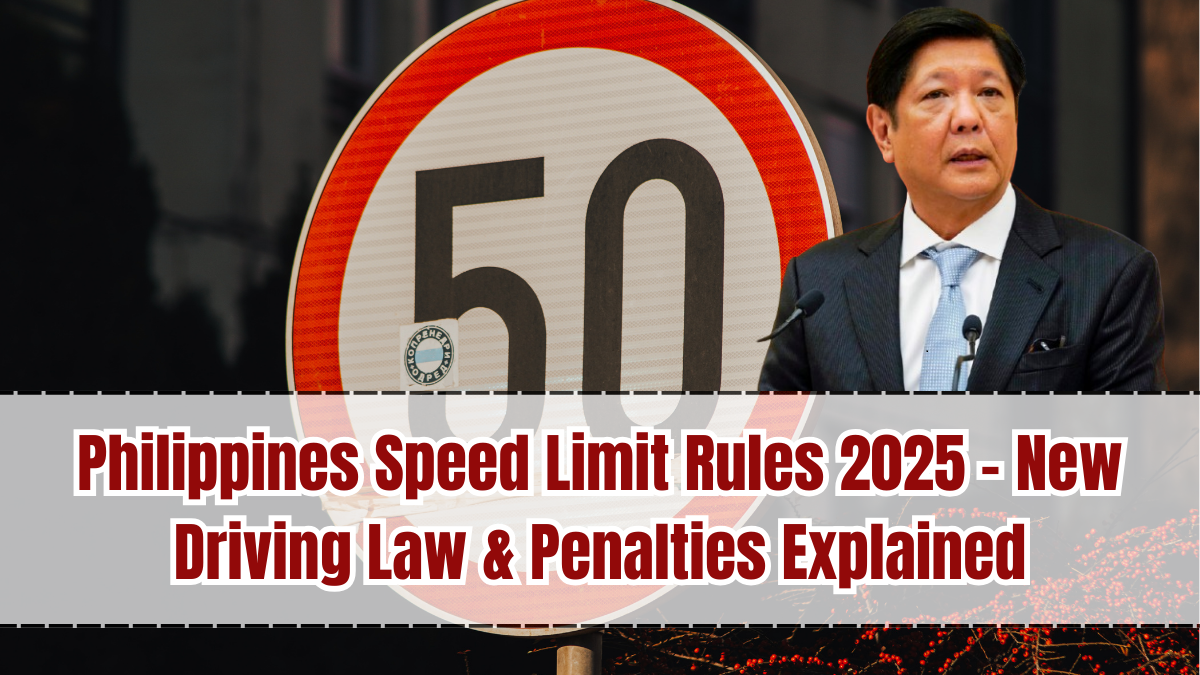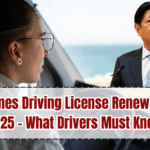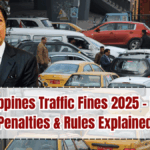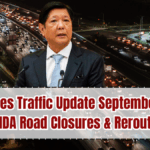The Land Transportation Office (LTO) and the Department of Transportation (DOTr) have officially rolled out stricter speed limit regulations under the Philippines Driving Law 2025. These reforms introduce updated speed limit rules, harsher penalties for overspeeding, and expanded enforcement zones across highways, urban centers, and school areas.
The changes aim to curb the rising number of road accidents caused by overspeeding, reckless driving, and non-compliance with traffic signs. For motorists, the Philippines Speed Limit Rules 2025 bring both stricter accountability and higher financial consequences for violations.
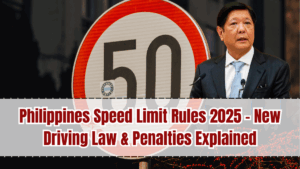
Why the Speed Limit Rules Were Updated in 2025
The government pushed for updated rules due to:
-
Accident Prevention: Overspeeding has been a leading cause of fatal road crashes in Metro Manila and provincial highways.
-
Pedestrian Safety: School zones and residential areas required stricter protection.
-
Consistency: To unify fragmented speed limit laws across different local government units (LGUs).
-
Technology Integration: Expanded use of CCTV and digital speed cameras under NCAP.
-
Global Standards: Aligning the Philippines with international road safety practices.
Updated Speed Limits – 2025 Rules
The new speed limits introduced in 2025 are:
-
Expressways: Maximum 100 km/h for cars, 80 km/h for buses and trucks.
-
National Highways: Maximum 80 km/h, minimum 40 km/h.
-
City Roads: Maximum 50 km/h unless otherwise posted.
-
Residential & School Zones: Maximum 30 km/h for all vehicles.
-
Heavy Vehicles in Urban Areas: Maximum 40 km/h.
New Penalties for Speeding – 2025 Enforcement
The updated fines for overspeeding are as follows:
-
Exceeding by 1–20 km/h: ₱1,500 fine + 3 demerit points.
-
Exceeding by 21–40 km/h: ₱3,000 fine + 5 demerit points.
-
Exceeding by 41–60 km/h: ₱5,000 fine + 10 demerit points.
-
Exceeding by 61 km/h and above: ₱10,000 fine + license suspension for 3 months.
Repeat offenders within 12 months may face double penalties and longer suspensions.
Enforcement Under NCAP & CCTV Monitoring
The No Contact Apprehension Program (NCAP) plays a major role in enforcing the 2025 speed limits:
-
Automated speed cameras placed on major highways and intersections.
-
Violations recorded and sent to vehicle owners digitally.
-
Notices delivered via SMS, email, and registered addresses.
-
Payments made online through official LTO and MMDA platforms.
This system ensures consistency and minimizes bribery or roadside disputes.
Impact on Motorists
The stricter rules affect motorists in several ways:
-
Higher Costs: Steeper fines will heavily impact repeat violators.
-
Greater Accountability: Owners responsible for fines even if another person drove the vehicle.
-
Safer Roads: Lower speed limits in residential and school zones protect children and pedestrians.
-
Professional Drivers: Bus and truck operators face stricter oversight on highways.
Benefits of the 2025 Speed Limit Law
The Philippines Speed Limit Rules 2025 bring long-term benefits:
-
Reduced Fatalities: Lower accident rates expected in overspeeding-prone areas.
-
Better Traffic Flow: Consistent speed rules reduce erratic driving.
-
International Recognition: Stronger safety framework aligns with global road safety campaigns.
-
Fair Enforcement: Automated cameras minimize human error and corruption.
Public Concerns About the Updates
Some citizens raised concerns about the reforms:
-
Affordability: Heavy fines may burden low-income motorists.
-
Awareness: Not all drivers may be aware of the updated limits.
-
Implementation: Concerns about fairness of NCAP and appeal processes.
-
Rural Areas: Enforcement may be weaker in provincial regions compared to Metro Manila.
Authorities assured that public awareness campaigns and nationwide road sign updates will support the transition.
Tips for Drivers Under the 2025 Speed Limit Rules
To avoid violations:
-
Always check posted signs as some areas may have stricter limits.
-
Drive 30 km/h near schools, hospitals, and residential streets.
-
Monitor speed using onboard digital displays or navigation apps.
-
Stay informed through LTO and MMDA advisories.
-
If cited, settle fines early online to avoid late penalties.
Conclusion
The Philippines Speed Limit Rules 2025 represent one of the most important updates in the country’s driving laws. With lower limits in school and residential zones, stricter highway monitoring, and heavier penalties for violations, the reforms aim to reduce accidents and save lives.
While concerns about affordability and awareness remain, the long-term benefits of safer roads and stricter enforcement outweigh short-term inconveniences. Motorists must adapt by practicing responsible driving and staying fully updated on the latest LTO advisories.
FAQs
What is the new maximum speed limit on expressways in 2025?
100 km/h for cars and 80 km/h for buses and trucks.
What is the penalty for exceeding the speed limit by 20 km/h?
A fine of ₱1,500 and 3 demerit points.
How are speed limit violations enforced under NCAP?
Through speed cameras and CCTV systems, with violation notices sent digitally.
What is the speed limit near schools and residential areas?
The limit is 30 km/h to ensure pedestrian safety.
What happens to repeat offenders?
Repeat violations within 12 months result in double penalties and longer suspensions.
Click here to know more.
